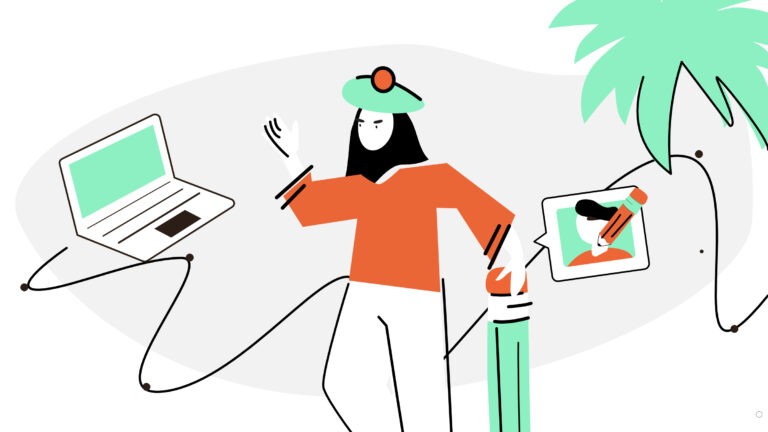Color palette generators are numerous; that is why it’s important to choose the ones that will help you the most in your design endeavors. We have looked through 20 good color code generators and picked the ones that have the most usability. Enjoy!
Why is choosing branding colors important?
Color psychology is no joke. The palette you will choose to use for a brand can determine its whole success story: it will affect people’s associations with a brand, the reputation it will pose, and the ‘vibe’ it will emit.
Choosing branding colors is a science of itself, there is a formula to follow and things to remember. But do not get scared, once you’re done choosing they will become your best friends. Branding colors are your helpers in conveying the message and getting the needed information across. Let them work for you and not against you.
Color palette generators will help! Pick the right combinations that will please the eye of the beholder, or simply welcome a muse into your creative process by looking through them. Let us guide you through the color code generators we found the most useful.
Where do I look for color palettes?
1. Coolors – for fast color palettes and filtering options.

Coolors is a great option if you’re looking for endless color palettes with the possibility to export the palette, view it as a collage, or draw out the palette from a photo you upload.
If you’re color blind, you can choose the type of your condition, and Coolors will adjust the palette accordingly.

The website also offers a wide range of adjustments. You can modify the colors down to 0.000001 % halftone up or down (approximate joking estimation from Gingersauce).

A great resource for picking the colors for any of your visuals – be it character design color palette, website color palette, or an illustration palette.
2. ColorSpace – for different types of palettes and gradients.

Though being in Beta, ColorSpace seems to be an excellent tool for generating different types of color palettes. All you have to do is enter the color code – or pick it by hand in the box if you’re not sure yet. After that, scroll the page and you will find more than 10 types of palettes generated for you.
Every color will have a color code that can be easily copied.

This color palette generator also offers an option of creating color gradients. Choose the gradient direction, pick 2 (or 3) colors and press ‘Generate’. Now, you can copy the CSS code and paste it to whenever you want that gradient to be displayed.

3. Colormind – for generating website palettes and seeing how it will look like.

A simple interface and a focus on templates is what Colormind is all about. Using this resource you can create a color palette for your website if you go to the ‘Website Colors’ page. Generate the palette you like, and scroll down. The Colormind color palette generator will take each of the colors from the palette and give you instructions on where better use it.
Handy-dandy!

Go to the ‘Templates’ menu to check how the colors will look on different occasions and pages: in graphs, notifications, tables, maps, etc.

4. Colorkuler – for picking and adjusting color palettes for your Instagram.

Instagram has long become a marketing and branding platform, rather than being a simple social media. Today, brands create professional Instagram accounts with visuals designed specifically for this network. This is where Colorkuler comes into play.
To create a cohesive-looking Insta profile, you need to have a color palette. This color palette generator lets you check what colors are most used on your profile by simply entering a username.

If you don’t like the palette you have – just change it, and come back to the Colorkuler to double-check.
5. BrandColors – for finding out the official colors of existing brands.

If you’re interested to see what branding colors big brands are using this database is your holy grail. It positions itself as the biggest brand color code database, and there is no reason not to believe in this statement.
Enter the name of about any brand out there, and you’ll get offered its color palette. Click on the color to copy its code, and go ahead using it in your designs.

Not exactly a color palette generator, but it helps with the task of researching branding colors of established companies.
6. Color Tool – for web & UX designers.

Color Tool is an advanced color palette generator that will be especially useful for web and user interface designers. The website offers various templates, which you can ‘dress up’ into colors directly on the page.
The killer feature of the tool – apart from seeing how the color palette will look in reality, is that you can also check the accessibility level of any color combination you pick.

7. Gingersauce – for finalizing the color palette and adding it into a professional brand book.
Master up your color palette with our color generator, or enter the colors you’ve already chosen beforehand.

There is plenty of room for last-minute decisions: change the colors or drag them if you’d like to switch places in a color palette.

Done with the finishing touches? Add your brand color palette into a brand book!
Gingersauce is a professional tool for creating brand guidelines that combine smart automation and your creativity. It’s a professional tool – meaning it won’t do a half-baked job, leaving you with a mediocre result.
A key component of brand guidelines is keeping a record of your brand colors: Gingersauce will gather all your visuals in one place and help you make sure your brand design stays consistent and cohesive. You can download a created brand book right away.



